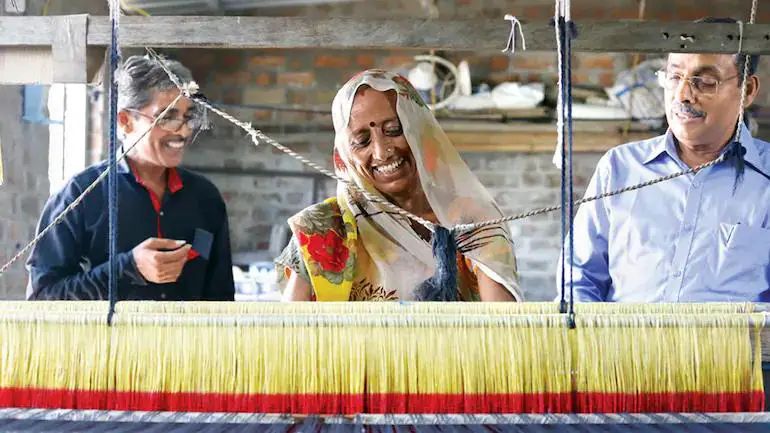Ahmedabad: On a splendid September morning, scores of people from in and around Surendranagar, exactly 120 kilometers from Ahmedabad, assemble at a handloom preparing focus run by the Entrepreneurship Development Institute of India (EDII), an independent body set up in 1983 by a grip of Indian banks and monetary organizations. The vast majority of them are from conventional weaving families that are presently battling to find the large changes in plan, promoting and innovation. Some of them are youthful, with fading revenue in the sluggish pace, probably low pay producing handloom business, and are in the middle to gain from the specialists the worldwide possibilities of the business and how it tends to be run all the more expertly.
What started as an initiative by the EDII and consulting firm EY, supported by HSBC in 2019, has grown into a large project with far-reaching impact despite two waves of the pandemic, with the centres at Surendranagar and five other clusters training over 6,000 handloom weavers so far. The other clusters where training is imparted are Bhuj in Gujarat, Maheshwar in Madhya Pradesh, Kamrup in Assam, Bargarh in Odisha and Salem in Tamil Nadu. “Our primary concern is how to offer customised help to develop new designs, help weavers access credit and find new markets, and leverage the new technologies for doing so,” says Dr Sunil Shukla, director general, EDII. Since most of the weavers belong to the informal sector, the training centres also help them do business in a structured fashion, and enrol as enterprises for better visibility and viability.
The Indian handloom sector has a variety of products categorised under ‘wearables’ such as the thin cotton towels, sarees, shirts, pants and shawls, and ‘non-wearables’, such as bags, purses, mats, caps, towels, bed linen, carpets and curtains. The Third Handloom Census (2009-10), recorded nearly 2.8 million households engaged in weaving and allied activities, 87 per cent in rural areas. The northeast accounted for nearly 65.2 per cent of the total handlooms operational in the country. The sector provides employment to 4.3 million weavers, mostly women, most of them illiterate or semi-literate. There is lack of credit, awareness of customer preferences, proper marketing and promotions, as well as technological backwardness, paucity in new designs and weaver numbers.
The biggest challenge, Shukla says, is the next-gen’s disinterest in traditional business. To overcome their hesitation and apprehension towards the new ways of doing business, several confidence-building measures had to be taken. Besides training weavers to run their businesses as enterprises, EDII also helps organise exhibitions (virtual, due to the pandemic), online buyer-seller meets and market development. A virtual exhibition in 2020 saw interest from buyers in the UAE, US and the UK. Weavers also need assistance in credit management since their past defaults have made banks wary of giving loans. Following these interventions, overall sales volume for these weavers’ products has increased by 42 per cent, and revenues were up 75 per cent, claims Shukla. “This is something that has brought us immense joy,” says Shukla. Since 2019, as many as 290 new handloom designs have been developed.
Rameshbhai Chauhan, 38, a weaver based in Ahmedabad, joined his father’s family occupation after failing his class 10 exam. Their joint family was earning Rs 20,000 to Rs 25,000 a month. However, two years ago, Chauhan joined EDII’s centre and learnt new designs, and digital marketing. His family now makes around Rs 50,000 a month, reaching out to clients even outside the state, using WhatsApp to communicate with clients and share their designs. “At a recent exhibition in Ahmedabad, I made Rs 1.2 lakh in just two hours,” says Chauhan. Anand Rathod, 23, another weaver who benefitted from EDII, is helping two younger people set up their looms right from scratch, and also training other weavers in his village to use digital marketing. Nothing, it seems, brings more happiness than paying it forward.



